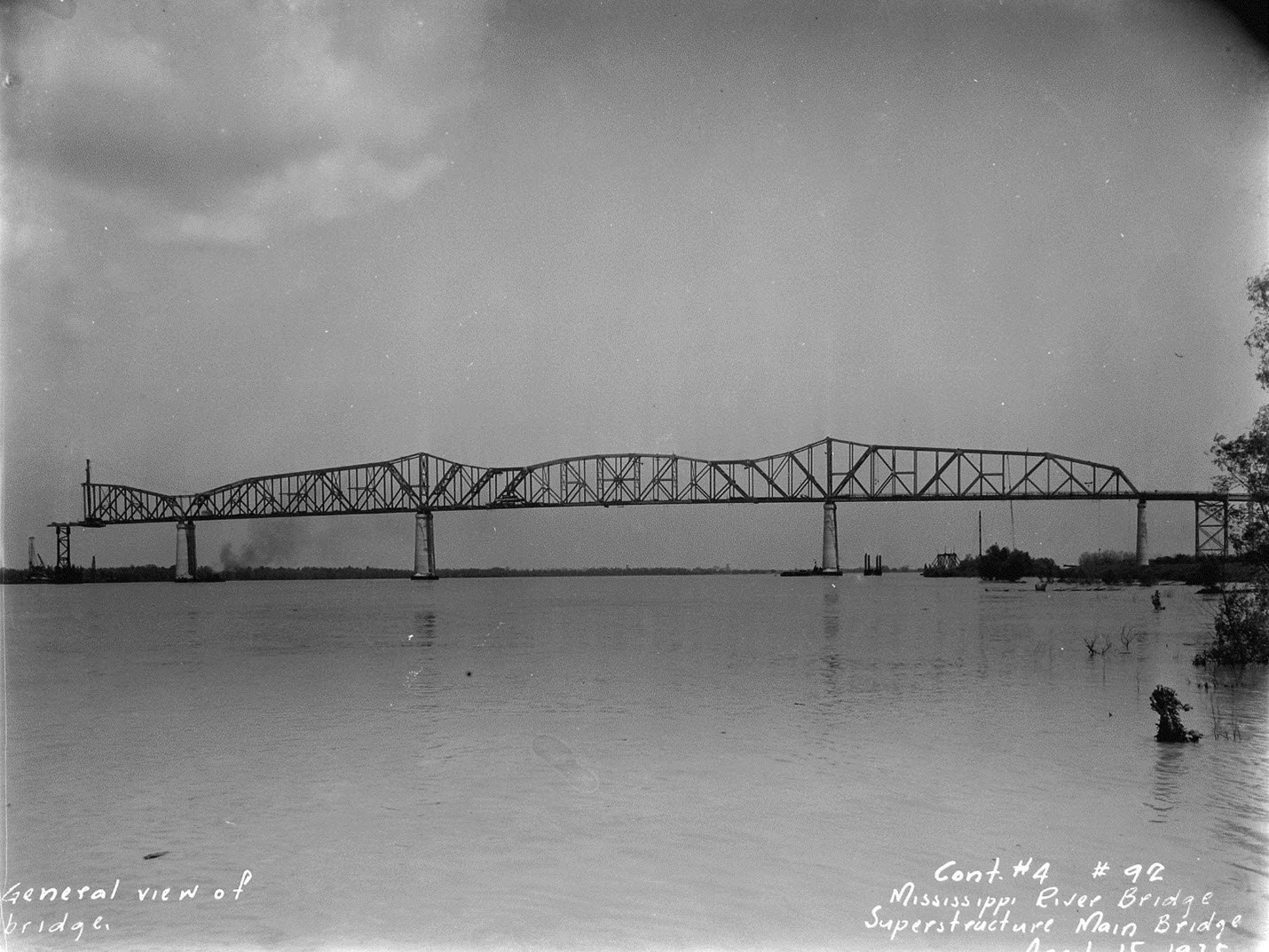
Since 1966, ASCE has designated over 280 projects as National or International Historic Civil Engineering Landmarks as part of its Historic Civil Engineering Landmark Program. Some of these landmarks – the Brooklyn Bridge, Eiffel Tower, and Hoover Dam – are well-known, while others are less prominent.
Designated as a National Historic Civil Engineering Landmark by ASCE in 2012, the Huey P. Long Bridge in New Orleans, Louisiana, changed the landscape of the lower Mississippi River.
Here are five things you didn’t know about the Huey P. Long Bridge:
1. Before the opening of the “Huey P” in 1935, trains had to ferry across the Mississippi River near the New Orleans port. Workers uncoupled segments of railcars and loaded them on to specially designed train ferries fitted with rail tracks. Ferries shuttled two to five railcars at a time. Engineers had to wait until the entire length of the train crossed the river, and then workers reassembled it on the opposite bank before proceeding to their next station.
2. The original driving surface was 18 feet wide for two-way traffic, leading one driver to comment, “Because of its extremely narrow lanes, with no shoulders, it is not so popular with those who cross by car. In fact, some say that more prayers have been uttered atop the Huey P. Long Bridge than in all the churches of New Orleans and Jefferson Parish combined.”
3. The railroad approaches have a 1.25% grade. Engineers from the mountain section of the Southern Pacific rail system had to train local flat-country engineers the intricacies of handling their locomotive and trains on this grade.
4. The impressive rail bridge, the longest over water in the world at 22,995 feet, had a total construction cost of $9,424,981, more than $3 million under its $13 million budget.
5. On Sept. 8, 1935, Senator Huey P. Long was shot in the state capitol building in Baton Rouge and died two days later. He did not live to see the completion of his namesake bridge over the Mississippi River. After his death, his widow, Rose, was appointed to fill his seat in the U.S. Senate and later was elected to the position, making her the second woman elected to the Senate — behind Hattie Caraway of Arkansas.
Members of ASCE’s History and Heritage Committee have been learning fun and interesting facts about HCELs around the world to share in the new “5 Things You Didn’t Know About …” series. As the committee continues to build an inventory of all HCEL projects, members of the committee and other volunteers have been visiting sites to photograph landmarks and ASCE plaques as well as assess their conditions. If interested in volunteering to help the committee record these landmarks, please contact committee chairman David Gilbert ([email protected]).
Learn more about the committee’s work and the ASCE landmark program.



